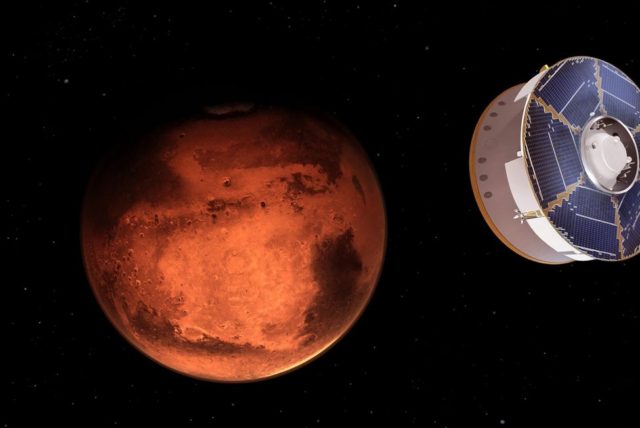ORLANDO, Fla., Feb. 18 (UPI) — NASA’s Mars rover Perseverance made a dangerous, robotic landing on Mars on Thursday, starting a high-tech mission to hunt for signs of life in an ancient lakebed.
The landing at roughly 3:55 p.m. EST marked the fifth NASA rover to successfully reach Mars. The mission is designed to be the first of three that may return rock samples to Earth in about 10 years.
The rover sent a series of brief, basic signals back to Earth. After an 11-minute journey through space, those signals told NASA control room technicians the rover was safe.
“Touchdown confirmed,” said Swati Mohan, NASA’s operations lead for the landing. “Perseverance is safely on the surface of Mars ready to begin seeking the signs of past life.”
“I mean just what an amazing team to work for all the adversity … and all the challenges that go with landing a rover on Mars. Plus, the challenges of COVID, and just an amazing accomplishment,” said NASA Acting Administrator Steve Jurczyk.
The spacecraft, launched from Kennedy Space Center in Florida, traveled more than 290 million miles miles over 203 days to get to the Red Planet, and its landing was monitored by scientists all over the world.
About an hour ahead of the planned landing time, controllers at NASA’s Jet Propulsion Laboratory in Pasadena, Calif. stopped transmitting signals to the spacecraft. After that, it was flying autonomously.
The landing maneuvers began when the spacecraft reached the edge of the Martian atmosphere while traveling at some 12,500 mph. Perseverance then used its heat shield, parachutes and thrusters to make the landing.
During the landing, the rover slowed down to just a couple miles an hour, “all in about seven minutes,” said Matt Wallace, the mission’s deputy project manager.
In the days after landing, NASA planned to test systems. Overnight, the agency expects to receive transmissions that include video, sounds and photos recorded during descent and landing.
The rover landed in an area labeled by NASA as Canyon de Chelly, after the national monument by the same name in Arizona. The landing site was a little over a mile from the ancient river delta in the crater.
Ken Farley, project scientist for the mission, said Thursday that the images from the descent will be used to make adjustment to the rover’s planned pathway.
“There is a dune field nearby, and we may have to go around the dune field … toward the delta,” Farley said.
Perseverance is “the biggest, heaviest, and most complex rover we’ve ever built” and the Jezero Crater destination “the most dangerous landing site we’ve ever attempted, said Alan Chen, NASA’s lead engineer for the landing process.
“We’re ready to roll, you’ve done everything right,” Chen told the control room crew leading up to the landing.

COMMENTS
Please let us know if you're having issues with commenting.